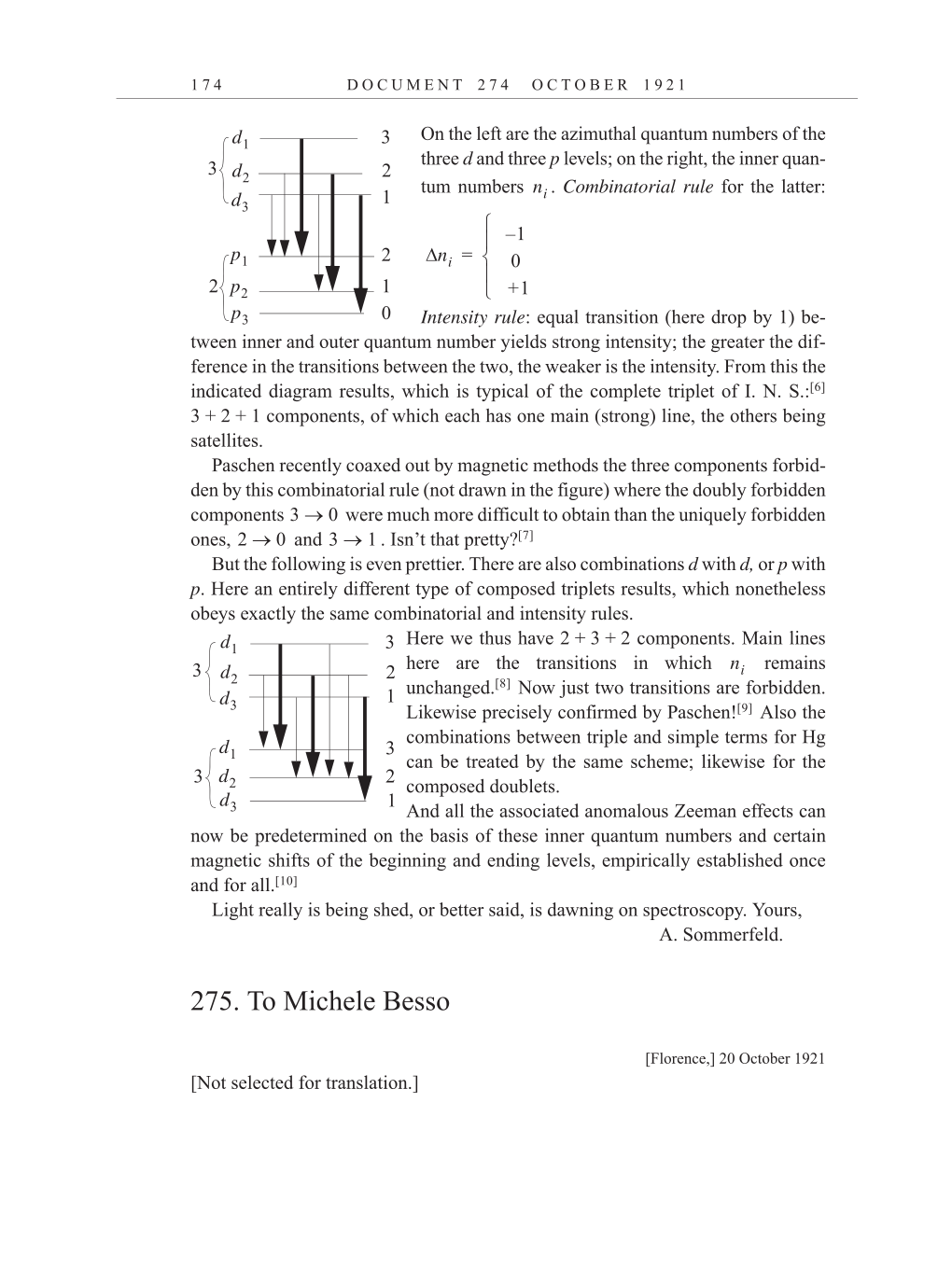1 7 4 D O C U M E N T 2 7 4 O C T O B E R 1 9 2 1
On the left are the azimuthal quantum numbers of the
three d and three p levels; on the right, the inner quan-
tum numbers . Combinatorial rule for the latter:
Intensity rule: equal transition (here drop by 1) be-
tween inner and outer quantum number yields strong intensity; the greater the dif-
ference in the transitions between the two, the weaker is the intensity. From this the
indicated diagram results, which is typical of the complete triplet of I. N.
S.:[6]
3 + 2 + 1 components, of which each has one main (strong) line, the others being
satellites.
Paschen recently coaxed out by magnetic methods the three components forbid-
den by this combinatorial rule (not drawn in the figure) where the doubly forbidden
components were much more difficult to obtain than the uniquely forbidden
ones, and . Isn’t that
pretty?[7]
But the following is even prettier. There are also combinations d with d, or p with
p. Here an entirely different type of composed triplets results, which nonetheless
obeys exactly the same combinatorial and intensity rules.
Here we thus have 2 + 3 + 2 components. Main lines
here are the transitions in which remains
unchanged.[8]
Now just two transitions are forbidden.
Likewise precisely confirmed by
Paschen![9]
Also the
combinations between triple and simple terms for Hg
can be treated by the same scheme; likewise for the
composed doublets.
And all the associated anomalous Zeeman effects can
now be predetermined on the basis of these inner quantum numbers and certain
magnetic shifts of the beginning and ending levels, empirically established once
and for
all.[10]
Light really is being shed, or better said, is dawning on spectroscopy. Yours,
A. Sommerfeld.
275. To Michele Besso
[Florence,] 20 October 1921
[Not selected for translation.]
3
2
1
2
1
0
d1
d2
d3
p1
p2
p3
3
2
ni
ni
–1
0
+1
=
3 0
2 0 3 1
3
2
1
3
2
1
d1
d2
d3
d1
d2
d3
3
3
ni
